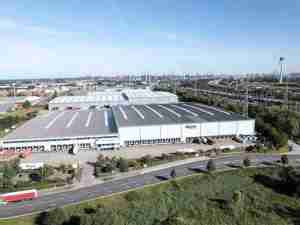The Nueces River Yard is located at the far western end of the Inner Harbor, near Suntide Road, and will be the Port’s new Main Interchange Rail Yard. It will greatly improve the rail infrastructure and transportation network in and out of the port and has the support of the three Class 1 railroads—the Union Pacific, BNSF, and KCS—that serve this region, as well as Genesee & Wyoming, the local operating railroad company. The three Class I railroads will deliver railcars to the New Main Interchange Yard, and Genesse & Wyoming will pickup and deliver railcars to local industries. The total cost of the project is $17 million. The Port will fund the remaining $7 million and recover half of that cost from the railroads through a special surcharge. “The TIGER grant completes a win-win public private partnership to improve rail infrastructure supporting customer growth and job creation,” said Joe Adams, Vice President of Public Affairs for Union Pacific's Southern Region.
The need for this new Main Interchange Rail Yard became increasingly important with the substantial growth in rail traffic at the port over the last five years. Historically, the Port received between 10,000 and 15,000 railcars every year. Since 2007, with the privatization of the Port’s grain elevator, completion of the Fulton Corridor, and the Eagle Ford shale discovery, the Port has seen its railcar volume dramatically increase to 32,000 railcars in 2011. New projects are expected to increase this volume even more. “This critical piece of supply chain infrastructure will benefit not just the Port and South Texas, but agriculture, energy, and industrial producers and consumers along BNSF’s MidCon Corridor from Texas to the Canadian border,” said Matthew K. Rose, BNSF’s Chairman and Chief Executive Officer. “The billions in capital investments private freight railroads such as BNSF are already making in US rail infrastructure combined with public investments such as these will expand capacity to move more freight, more efficiently by rail to keep American businesses competitive in world markets.”
U.S. Congressman Blake Farenthold said “Ports are critical links to our nation’s trading partners and their infrastructure investment needs should be a primary focus within our nation’s transportation plan. Expansion of the rail yard at the Port of Corpus Christi brings jobs and economic growth to South Texas. Our port, serviced by multiple rail lines and good highway infrastructure, is poised to capitalize on increased trade from the Eagle Ford Shale and expansion of the Panama Canal.”
The Nueces River Rail Yard is the most important project in the Port’s Rail Master Plan. The New Main Interchange Yard will consist of one 7,800-foot track capable of storing a 110-car unit train and four parallel storage tracks containing 15,100 feet of track and capable of storing an additional 252 railcars. A 16-foot wide service road will run the full length of the yard and a 750-foot service track will be constructed for locomotives awaiting outbound trains. “Countless industries rely on the Port of Corpus Christi to provide for the efficient transportation of commodities and goods, and the new rail capacity made possible by this TIGER









